Hearing Images Lie
The Girl Chewing Gum
In his film and video works, John Smith keeps his images close but his words closer. One of his earliest and most famous films, The Girl Chewing Gum (1975), playfully exposes the interaction of language and image.
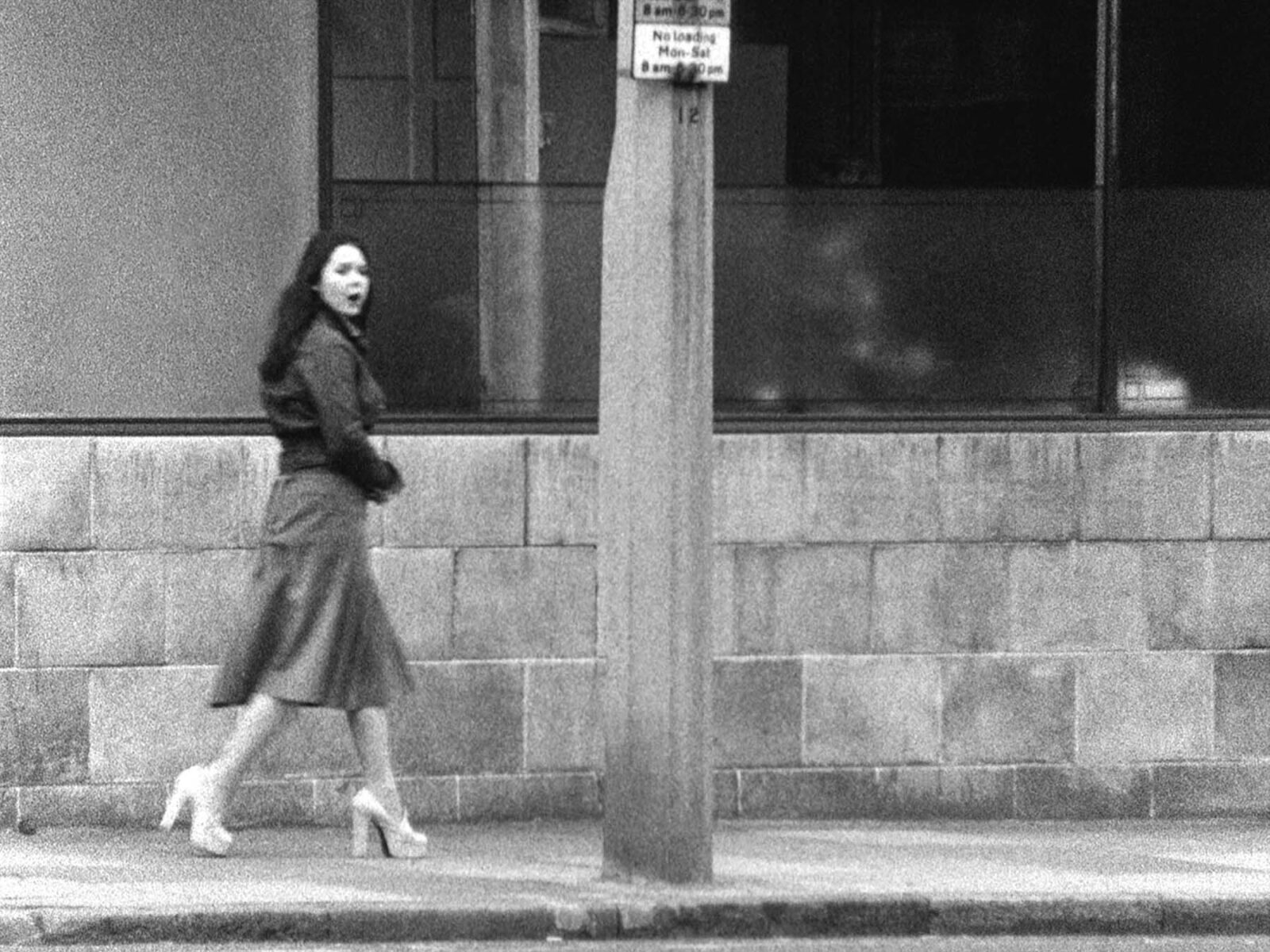
One of the most persistent half-truths about film, especially documentaries, is that a voiceover cannot be anything other than authoritarian—as the voice of a wrathful deity in a medium that was born after the death of God; always out of time and out of place. Moreover, in those green valley pastures of experimental film filled with longing for ‘pure cinema’, language itself is often suspect. Especially in lyrical or abstract experiments, the word (both spoken and depicted) is commonly perceived as a killjoy, thwarting the path towards a perfectly sublime image. John Smith’s films, however, undermine both the voiceover bias and the damnation of text as a prime stimulus of moving images.
At first glance, The Girl Chewing Gum (1975), his most famous film from fifty years of experimental shorts whimsically exploring everyday life, confirms the almost ritualistic rejection of the voiceover by undermining its ostentatiously authoritarian character through hilariously understated comedy, reminiscent of the observational irony of Monty Python’s Flying Circus (1969-1974). From the start, Smith performs a godlike voice that seems to command cinematic representation. And the voice saith, “I want the little girl to run across”, and it is done. His voiceover then goes on to describe events as they happen on screen, before indulging in free fabulation.
When continuously confronted with the mundane reality of Dalston, an area of East London, however, he loses his grip. As soon as the panning and zooming Arriflex 16 mm camera lands on the Odeon cinema, the voiceover starts expressing details that go beyond the information he is able to gather from mere observation. It is as if the confrontation with the film theatre—showing the adventure fantasy The Land That Time Forgot (1974)—encourages uninhibited fictionalisation.
Soon after the voiceover has taken this more apparently fictitious turn, the narrator reveals that a few weeks ago, he made a wrong observation at an information board with job offers at the glass merchant Steele’s across the street. The words he mistook for Greek were, in fact, “upside down, back to front English”. Yet another instance of words lying, albeit through the way they were visually perceived. At the end of this confession follows another revelation: the narrator indicates that he is not facing Steele’s right now, but is standing in a field near Ledgemore Heath, some fifteen miles from the place shown in the footage. He then describes what he sees there while the camera continues to observe the footpath in front of Steele’s. When the commentary does re-engage with the images, the voiceover turns a passing man into someone who has just robbed the local post office. “The burglar alarm is still ringing”, the voice adds, while the alarm that had been ringing since the film’s beginning is actually not heard in this very instance. The camera zooms out from a queue of mostly children lining up at Odeon’s box office.
Together with the Dalston street sounds, the alarm only returns in The Girl Chewing Gum’s next and final shot, which shows the field with the tree and pylons that the narrator described earlier. If what the narrator indicated before is correct, we are now fifteen miles away, where the alarm and the street sounds would therefore not be within earshot. The camera makes a full circle, but we do not get to see the narrator. Even though he claimed to be standing in the field with a microphone and making his commentary from there.
The voiceover is missing from the second and shortest shot of The Girl Chewing Gum, but his words still reverberate. Although this ‘present absence’, along with the circling camera, creates the expectation that we might get to see the narrator, even if we do not hear him, this does not materialise. Did the voiceover (also) not tell us the truth when he claimed to be in the field? Or are we now faced with a deceitful image that refuses to show the narrator? In an interview decades after completing his film, Smith said that he visited Ledgemore Heath twice, once to film the field and once to record the voiceover. Whether true or not, the film offers no visible evidence of the latter.
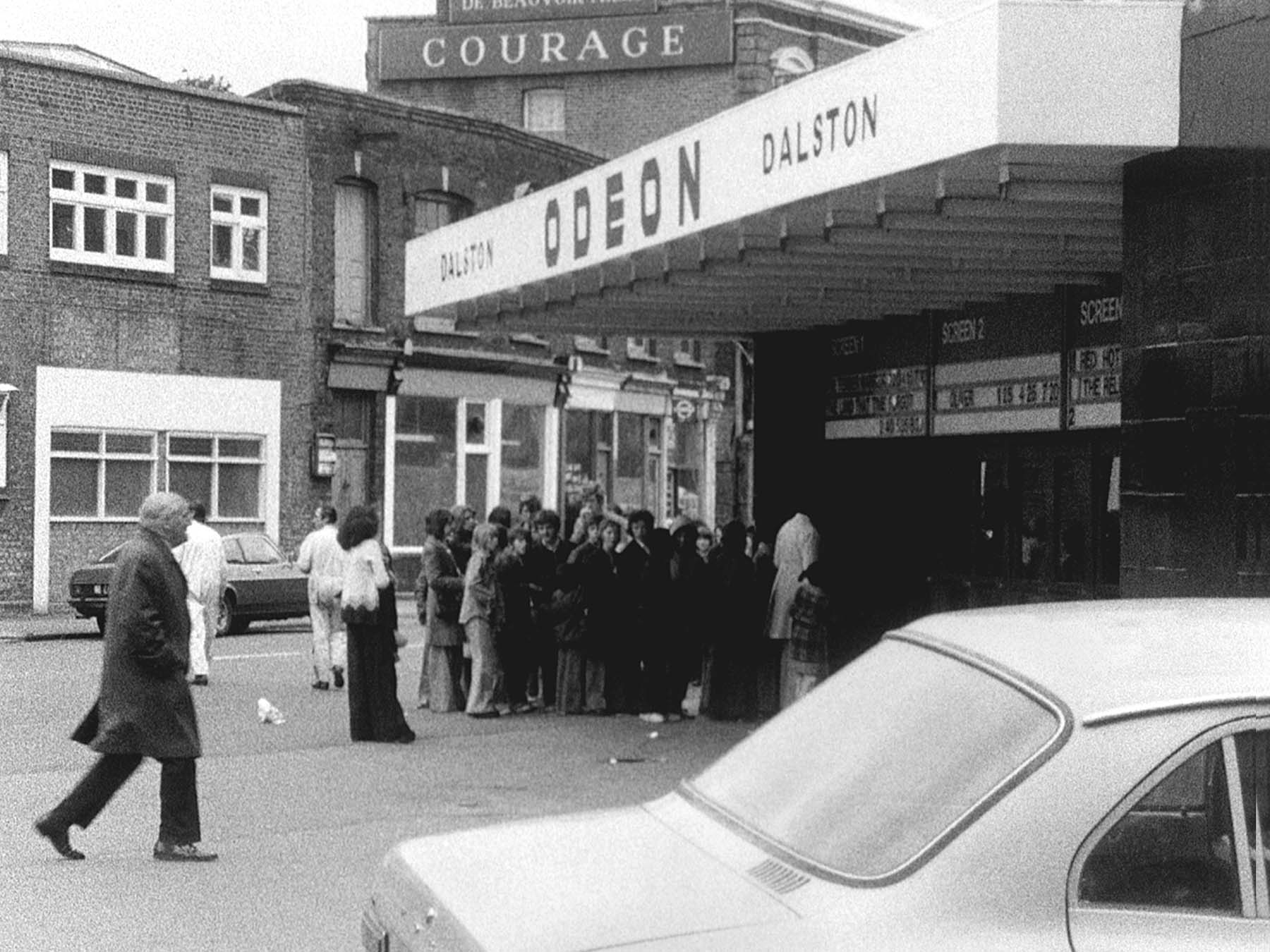
The Girl Chewing Gum (John Smith, 1976)
What we do see are the pylons and electricity cables (supposedly) connecting the rural landscape with the urban centre in East London. That visual connection is less pronounced than the link the voiceover presented us. The wordless ending of The Girl Chewing Gum, however, leaves us with at least as many uncertainties as the preceding shot with voiceover. The unreliable narrator has conjured an atmosphere of suspicion, but he is not alone in his deception. While language creates an ambiguous framework where images can thrive, the image exposes the fallacy of the statements made by the voiceover. We see words lying. In the second shot, the absence of words empowers the image, while language’s deceitfulness has equally raised doubts about the image. We realise that images, too, can lie. And that we might need words to reveal this.
In delivering a humorous critique on documentary naturalism, Smith does not elevate the image to a level of authority as to take the place of verbal language. Even a clear image can leave us in the dark. Word and image, both of them ambiguous, cannot exist without each other in the construct we call ‘film’.
The narrator resorts to various strategies, one after the other, in a convulsive attempt to remain in control. During a zoom to a rooftop clock, the voiceover even feigns to master time. The hubris of the controlling voice is out in the open. This part of The Girl Chewing Gum can be interpreted as a nod to structuralist cinema (which was very present in 1970s artist filmmaking) and its desire to convey the experience of time passing by. Similarly, the 360° movement of the camera in the second shot can be seen as another nod to that type of experimental film. Is the exclusively visual image, however, more revelatory and relevant than the image overlaid by a voice?
Smith’s work flourishes in the interplay between word and image. For him, language is not a killjoy but creates bountiful opportunities. In playing around with these opportunities, Smith does not simply let a voiceover do the talking, nor does he put the ‘pure’ image on a pedestal. In his playfully deconstructive construct, he defenestrates any and all attempts at superiority.

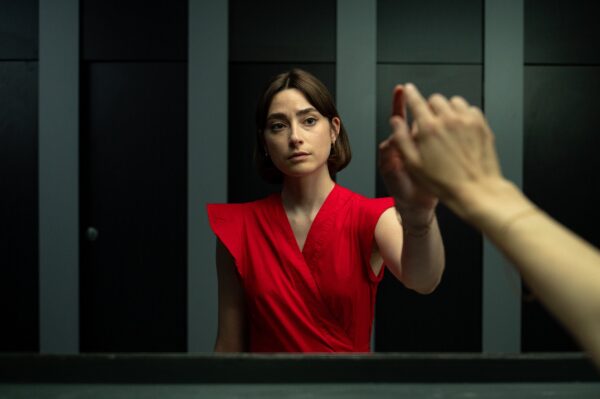
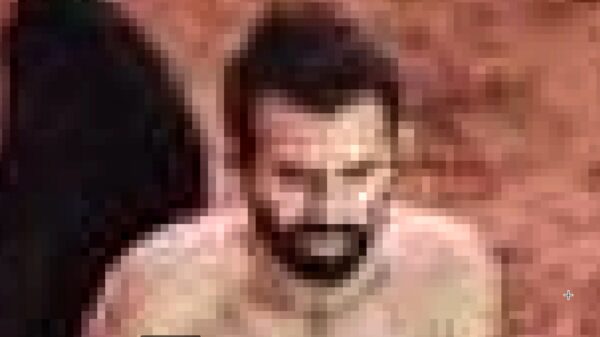
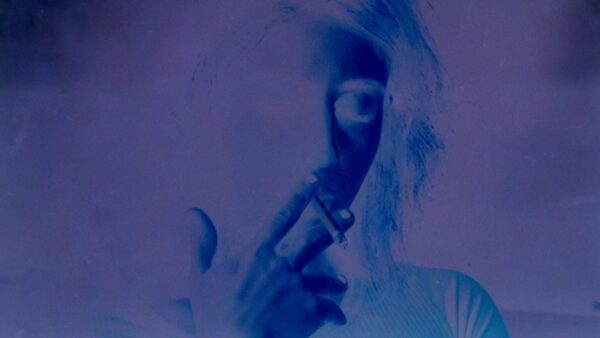
There are no comments yet, be the first!